In Korean culture, flowers do more than merely beautify the surroundings; they're deeply ingrained within the country's traditions, symbolizing emotions, beliefs, and cultural values.
From the celebratory cherry blossoms in Seoul that herald the arrival of spring to the lesser-known but equally significant wildflowers, each carries its own unique meaning.
The allure of these flowers isn't just in their visual appeal but in the layers of symbolism that offer a peek into the Korean way of life and the country's rich heritage.

Jump to:
💐 Flower Color Meanings in Korea
In the diverse palette of Korean floriculture, colors are more than just aesthetic choices— they're imbued with deep cultural significance.
Each hue tells a story of tradition, embodies a specific emotion, and brings forth a unique symbolic meaning that is woven into the fabric of Korean society.
The Purity of White and Innocence
The color white in Korean flowers often denotes purity and innocence, qualities highly venerated in the culture. These blossoms frequently grace ceremonies celebrating new beginnings and are cherished for their tranquil presence.
Vibrant Yellows for Happiness and Prosperity
Yellows are a splash of sunlight in a garden, bringing with them the light-hearted energy of happiness. This vibrant hue is a harbinger of good fortune and is synonymous with the rich golds found in traditional Korean ornaments, representing success and achievement.
Soothing Purples for Nobility and Wealth
Purple flowers carry the weight of history, signifying nobility, and are often linked to wealth. The saengsacho (생사초), a rare purple flower, imbues a royal presence within its purple petals, echoing the robes of emperors past.
Romantic Reds for Passion and Love
Red is the color of the heart and in the floral language of Korea; it signals passion and deep love. The red Camellia, or Korean Fire, blooms fiercely as a testament to desire and the bonds of the heart.
With every red petal, they speak of strong emotions and the burning intensity of love that endures through time and hardship.

🌼 Rituals and Traditional Uses of Flowers
Weddings and Celebrations
In Korean weddings, certain flowers stand out for their significant meanings.
The Mugunghwa, or Hibiscus syriacus, South Korea's national flower, is commonly associated with immortality and eternal love, making it a popular choice. It often features in wedding decorations to bless the couple with enduring happiness.
The vibrant Azaleas are also a staple at Korean nuptials, where they symbolize passion and the couple's wish to preserve the delicate beauty of their relationship.
For royal and traditional weddings, the Peony, symbolizing wealth and honor, is used extensively to adorn the venue, infusing the celebration with a sense of prosperity and grandeur.
Funerals and Mourning
During funerals, Koreans' choice of flowers is especially carefully considered.
White Chrysanthemums are often seen because they represent grief and lamentation. Their pure hue is a tribute to the life and memory of the departed.
Lilies, with their serene and somber beauty, are also common at funerals. They convey the message of the soul's return to innocence after death.
Furthermore, Carnations, particularly the white and yellow varieties, are used to express respect and mourning, demonstrating the community's collective sorrow.
Gifts and Symbolic Gestures
Flowers serve as powerful symbols when offered as gifts in Korea. A bouquet of Yellow Forsythias is a delightful choice to present as a token of appreciation; they bloom in early spring in Korea, thus symbolizing anticipation.
To express gratitude or an apology, giving Camellias is a customary gesture, with red camellias denoting deep love and white ones suggesting admiration.
Lastly, Orchids are esteemed for their delicate and graceful appearance and are given to convey respect, especially to elders or people of high status, embodying the recipient's refined beauty and strength.
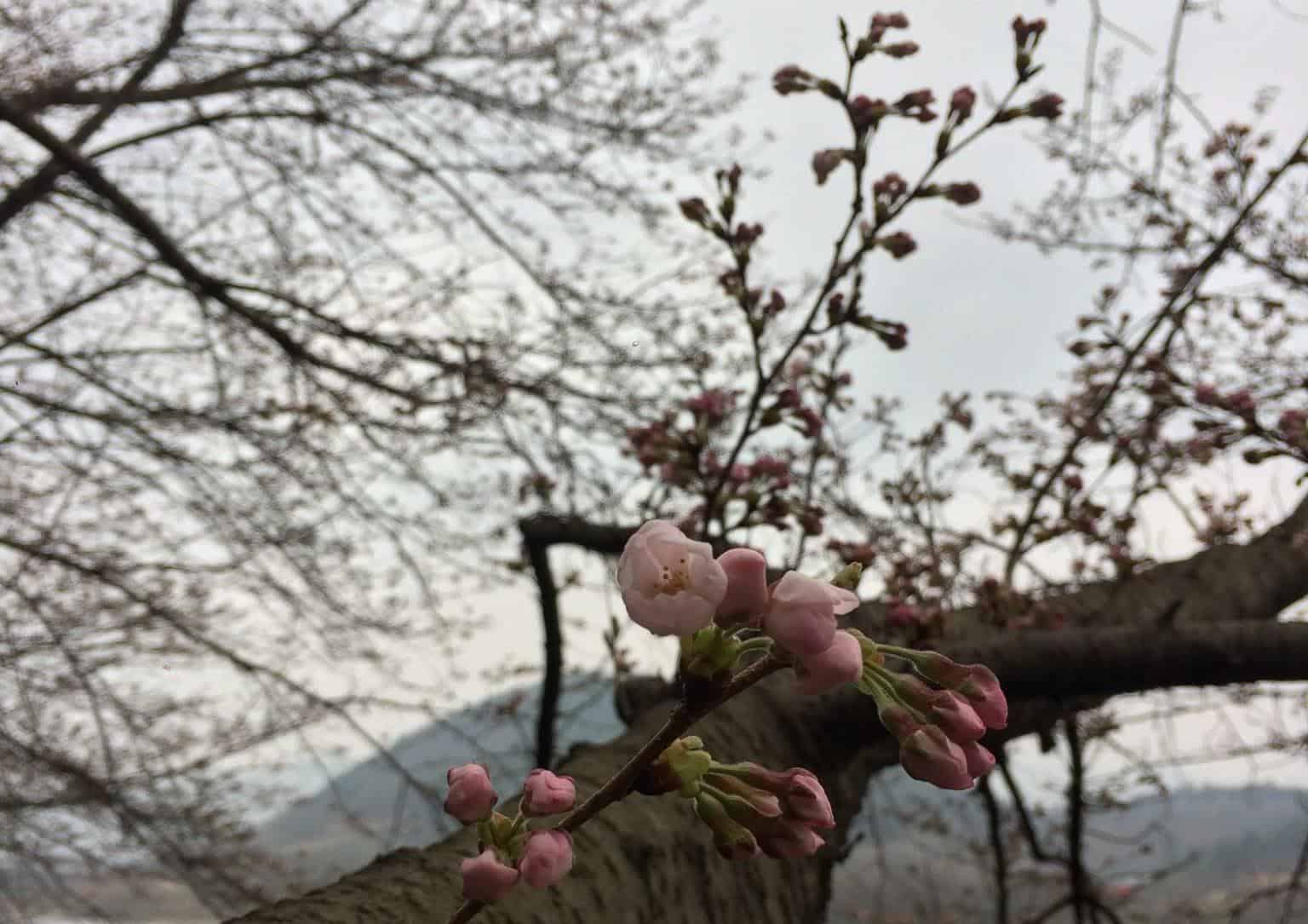
🏵️ Flower Festivals in Korea
Korea celebrates its love for flowers with various festivals throughout the year. Each festival is a vibrant showcase of tradition, beauty, and the symbolic meanings tied to native flowers.
Jeju Cherry Blossom Festival: Every late March to early April of each year, Jeju Island is adorned with the delicate pink flowers of the king cherry blossom.
Visitors are greeted with a splendid view as the trees blossom, representing the transient nature of life, blooming to their full glory. You can enjoy cultural performances and art exhibitions amidst the breathtaking scenery.
Jinhae Gunhangje Festival: Celebrated in early April, this is a time when the streets of Jinhae are lined with the beautiful backdrop of cherry blossoms.
During this event, they symbolize purity and renewal, and the city becomes a canvas of white and pink. The festival also includes military parades and street performances, celebrating the beauty of spring and the flowers that herald its arrival.
Goyang International Flower Festival: Held in late April to early May, this is a celebration of diverse floral species including tulips, lilies, and more.
The festival not only features the flowers' vibrant colors and fragrances but also their meanings of love, passion, and purity. It hosts exhibitions, cultural events, and interactive programs for visitors of all ages.
Icheon Rice Cultural Festival: While this festival in October emphasizes the importance of rice, it also celebrates the autumn blooms.
Marigolds, cosmos, and cockscombs signifying creativity, peace, and affection, respectively, paint a gorgeous landscape. They showcase the harmony between agriculture and floral beauty.
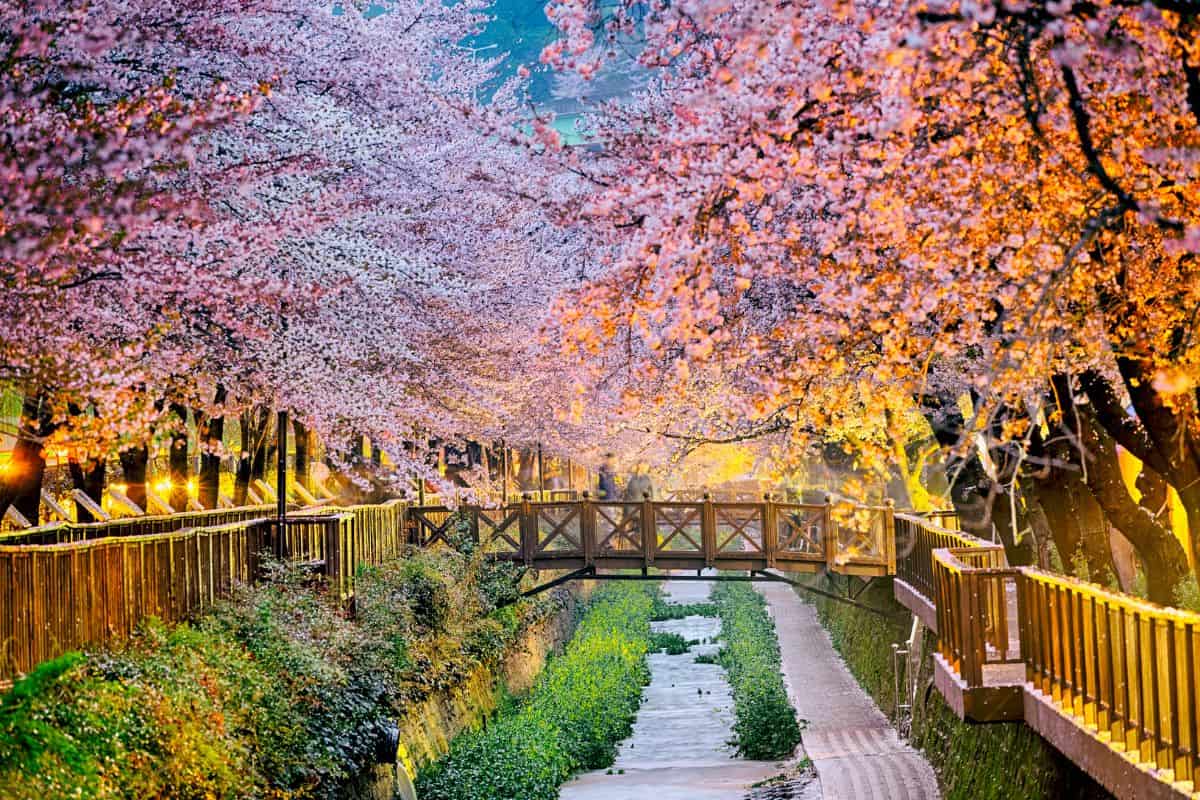
🌻 The Flowers of South Korea
Mugunghwa
The Mugunghwa, or Hibiscus syriacus, is more than just a bloom; it's a national emblem that encapsulates the ideals of hope and resilience cherished by South Korea.
Historically, the Korean hibiscus has been intertwined with the Korean identity for centuries. I even have one in my backyard! Its hardy characteristics, embodying the ability to thrive amidst hardship, have led to its status as a symbol of national pride and cultural heritage.
Thus, the Mugunghwa is not merely a flower; it serves to honor the legacy and spirit of South Korea's past, present, and future.
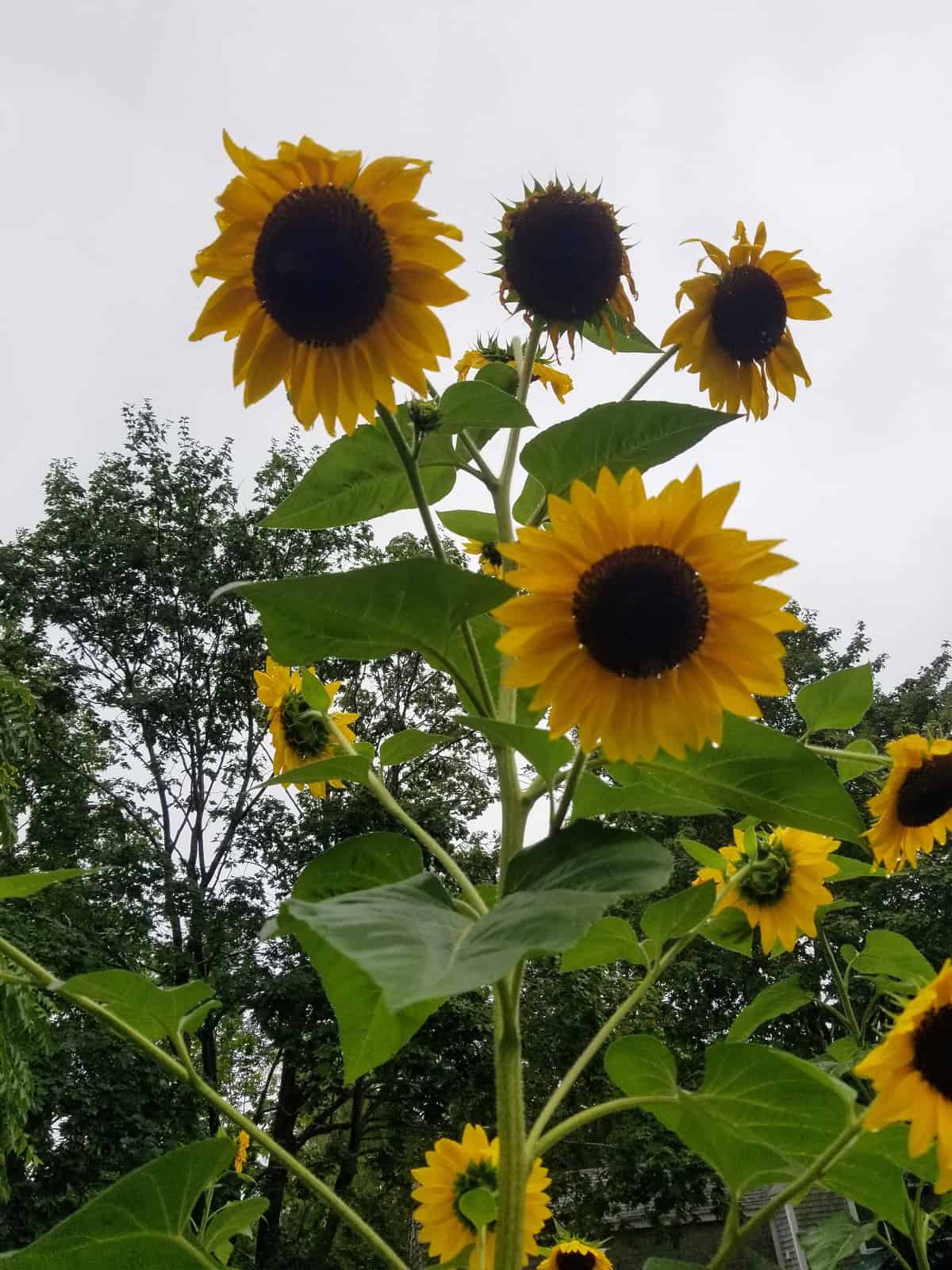
Cherry Blossoms
Cherry blossoms, known as 'beotkkot' in Korean, signal the arrival of spring and epitomize the theme of renewal in South Korea. Their pink and white petals paint the landscape with colors that herald new beginnings.
Cherry blossoms are more than just flowers; they represent a time of rejuvenation and beauty, often serving as a scenic backdrop in Korean dramas.
These dramas vividly capture the essence of cherry blossoms, intertwining love and life's fleeting nature against the brief but brilliant blooming period of these flowers.
Additionally, cities throughout the country host cherry blossom festivals, attracting tourists and locals alike.
People flock to islands like Jeju to witness cherry blossoms against the backdrop of the island's unique topography. Here, attendees can experience the full splendor of these trees in various hues of pink and white, symbolizing a fresh start for the year.
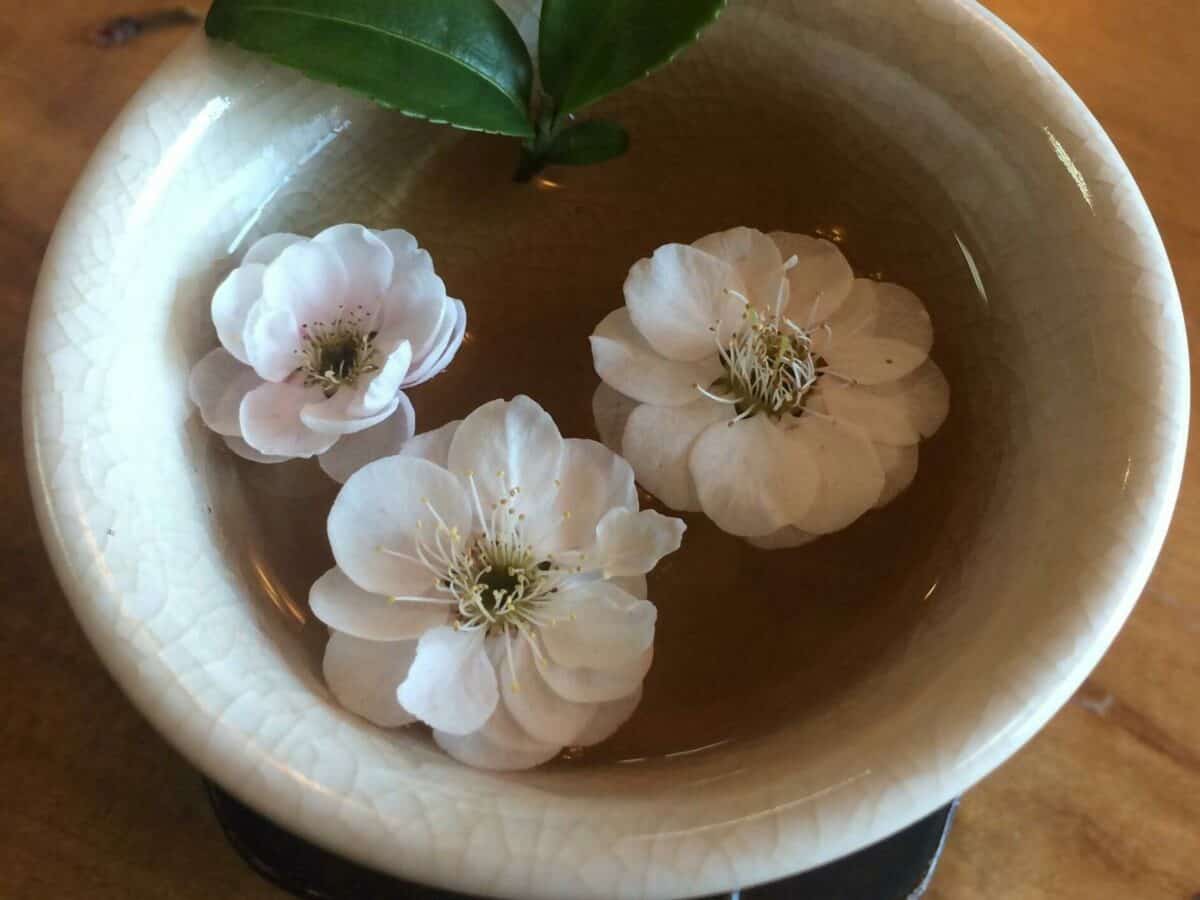
Jangmi
The Jangmi, or rose, is a timeless symbol of love and passion. Red roses, in particular, are given to express deep emotions and an ardent love that burns brightly. The rich, velvety red petals of the red rose embody intensity and longing, often associated with romantic love or a celebration of first love.
On the other hand, the more delicate pink roses signify gentler affection and sweetness, which are suitable for expressing joy and gratitude towards someone special.
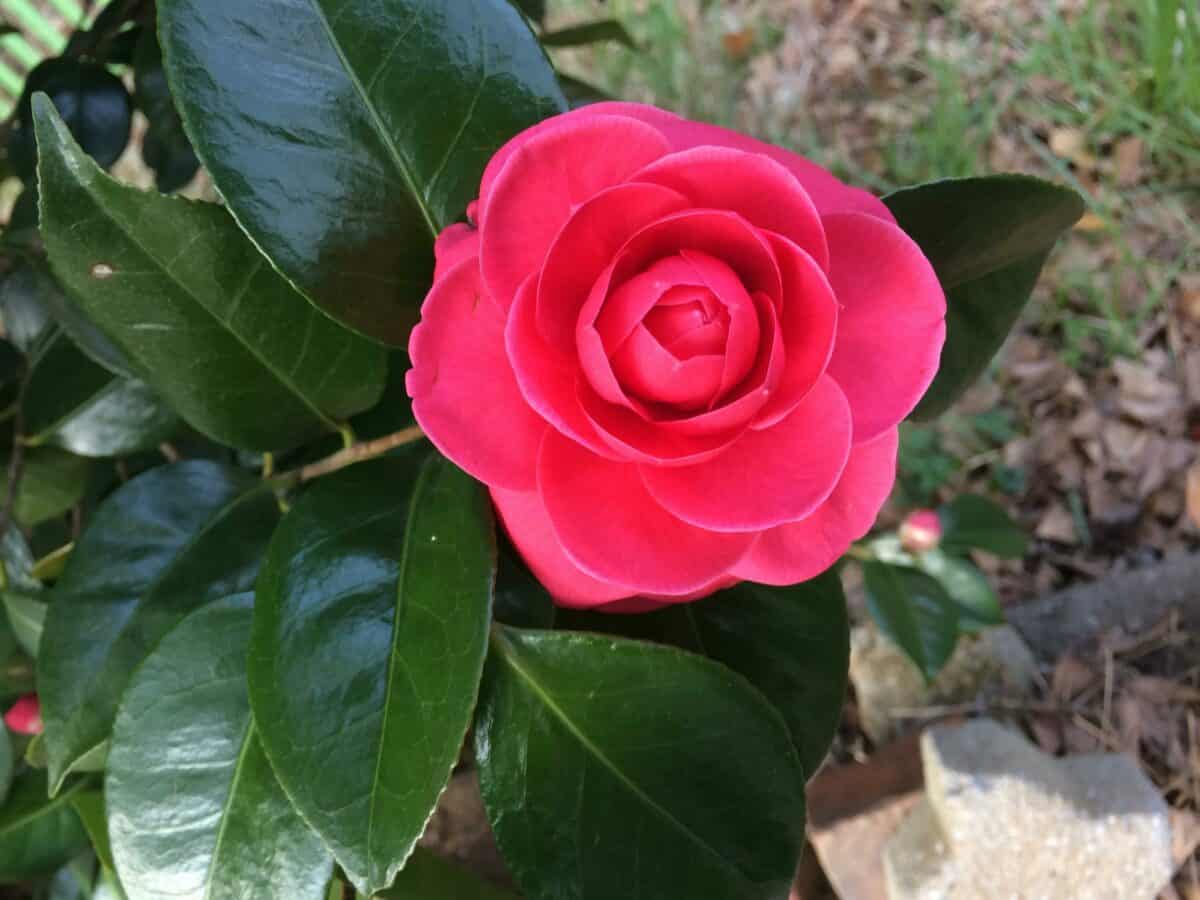
Tulips and Lilies
Tulips, with their sleek and upright form, represent an elegant love.
Pink tulips can be given as a declaration of affection and caring, while red tulips are a bold statement of true love. They’re often associated with longevity in relationships, suggesting a strong and lasting bond.
Lilies, meanwhile, speak of purity and a refined beauty. They’re commonly associated with the heart and symbolize a pure intention or an esteemed form of love.
In Korea, the white lily is particularly associated with the innocence of first love, while pink lilies are used to convey admiration and a sense of sweetness in the romance.
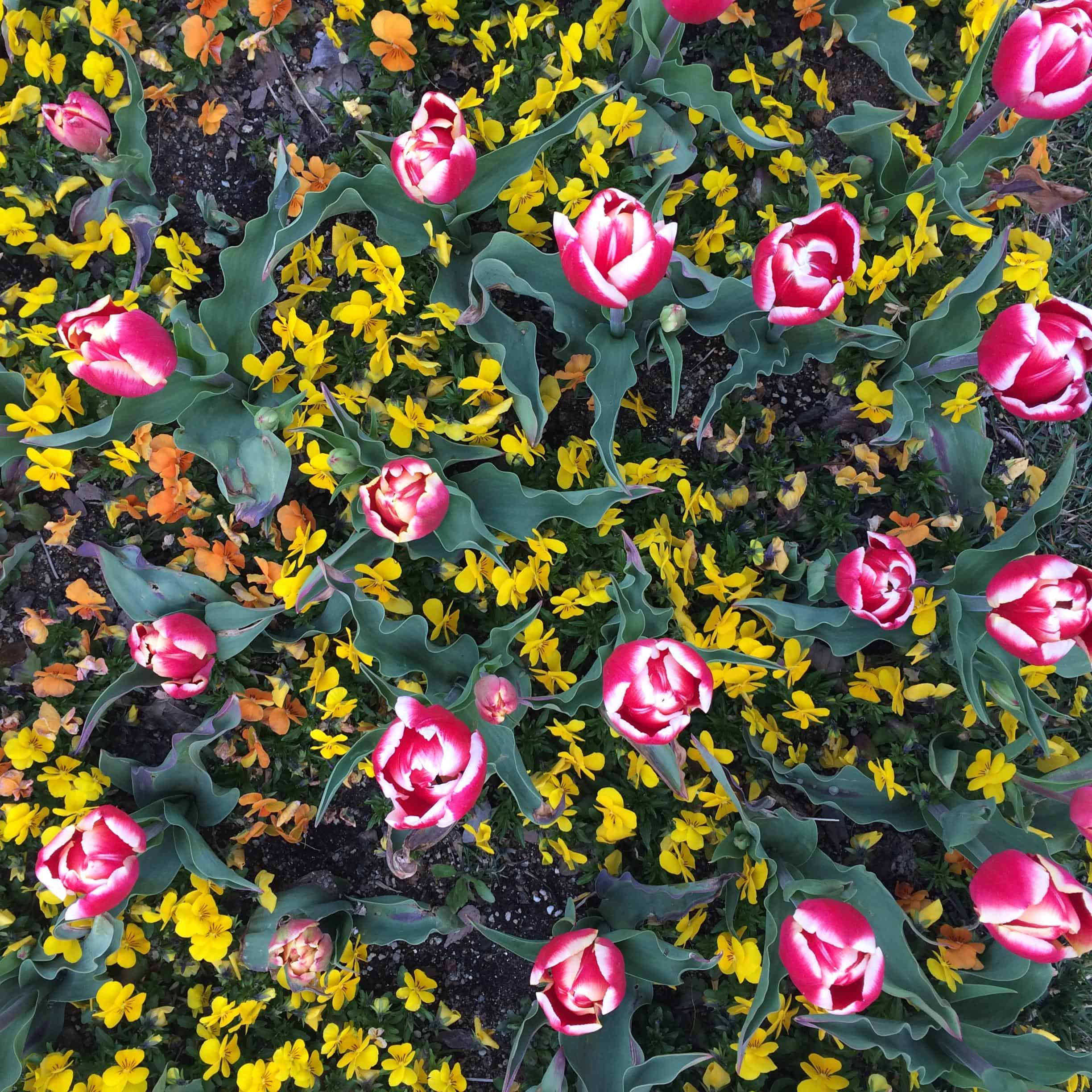
Haebaragi
The Sunflower, known as haebaragi in Korean, is a prominent figure of sunshine and positivity. With its broad, bright yellow petals that mimic the sun, it’s no wonder they represent happiness and vitality.
These towering flowers turn their heads to follow the sun throughout the day, a unique characteristic that symbolizes loyalty and adoration.
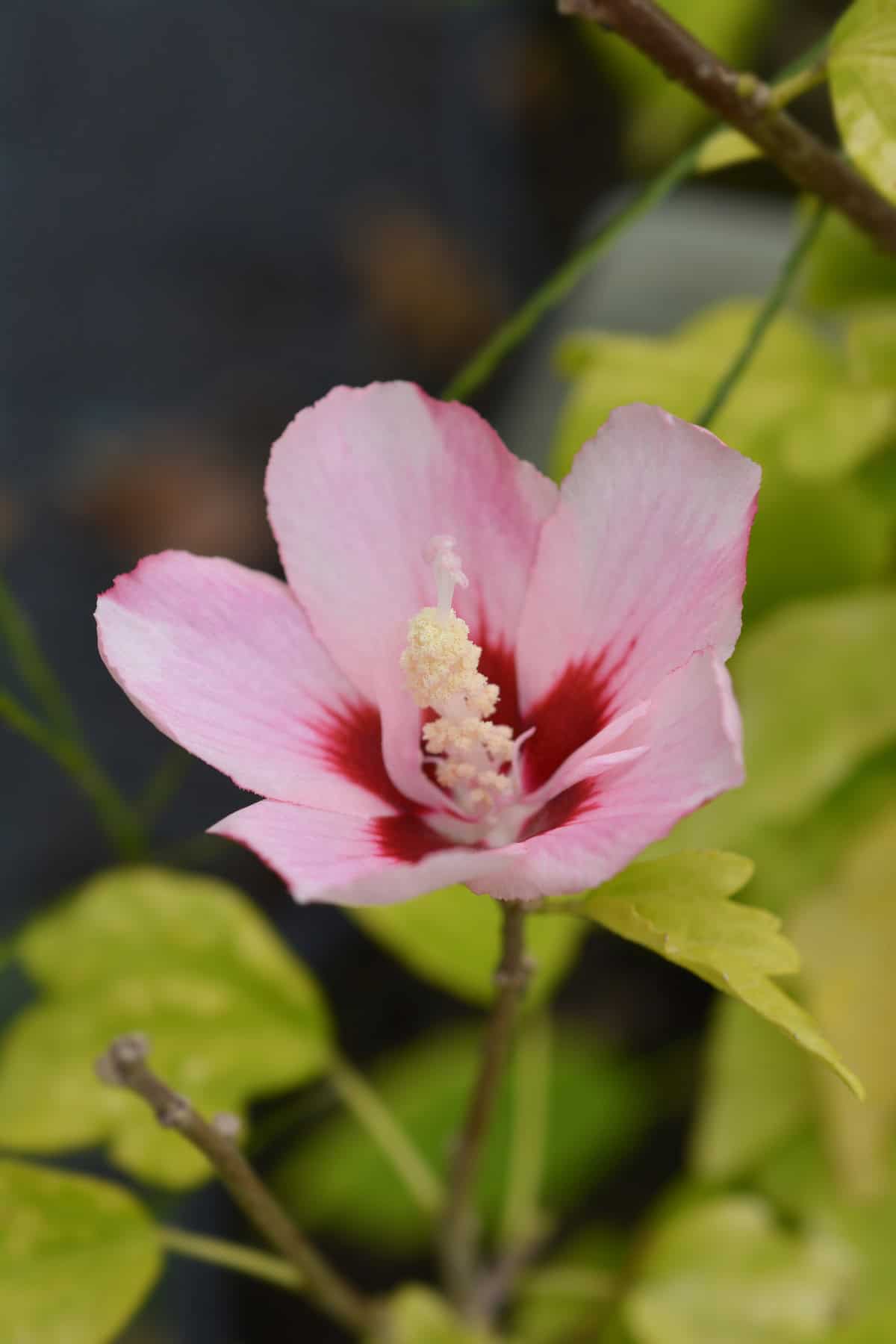
Daffodils
Daffodils, often known as narcissus, are noooooot actually native to Korea but have gained popularity for their bright yellow blooms and are cherished during the spring season. They’re primarily associated with vitality and renewal, marking the onset of spring with their vibrant coloration.
In terms of cultural significance, daffodils are considered harbingers of good fortune. They symbolize persistence, as highlighted by their ability to thrive for many years after planting. These resilient flowers are known to continue growing in the same spot for several decades.
In the language of flowers, daffodils remind individuals to stay bright and positive, mirroring the flower's ability to blossom year after year with the same zest and vibrancy.

Canola Flowers
The canola flower, often referred to in Korea as yuchae, is a tiny but vibrant yellow bloom that captures the attention of onlookers with its bright colors.
These flowers are particularly noteworthy not only for their aesthetic appeal but also for their practical use. The seeds of the canola flower are a significant agricultural product as they are a major source of vegetable oil globally.
In Korean culture, canola flowers are synonymous with the peak of spring in May and are often associated with festivals celebrating the season.
Visitors to Jeju Island and surrounding suburban areas during the springtime are greeted with the spectacular sight of canola fields in full bloom starting in early May, creating a picturesque landscape that has become a popular destination for tourists and locals alike.
For those looking to witness the beauty of these fields, the famous Canola Flower Festival information provides details on where to find these striking yellow flowers in Korea.
Canola flowers are not just pleasing to the eye but are also an emblem of the country's agricultural might, as canola oil production plays a pivotal role in the culinary and economic fabric of Korea.

Dandelion
The dandelion is a flower rich in symbolism. Often found gracing meadows and gardens with its vibrant yellow blossoms, this flower represents several positive concepts across cultures.
In Korea, the dandelion is associated with themes of hope, perseverance, and the cycle of life.
The dandelion is a tribute to the resilience found in the natural world, demonstrating the ability to rise and flourish even in challenging environments. They thrive in a range of conditions, reseeding and spreading with ease, invoking the spirit of determination.
In addition to their symbolic meanings, dandelions are also known for their nutritional and medicinal values, being rich in vitamins and employed in various herbal remedies.
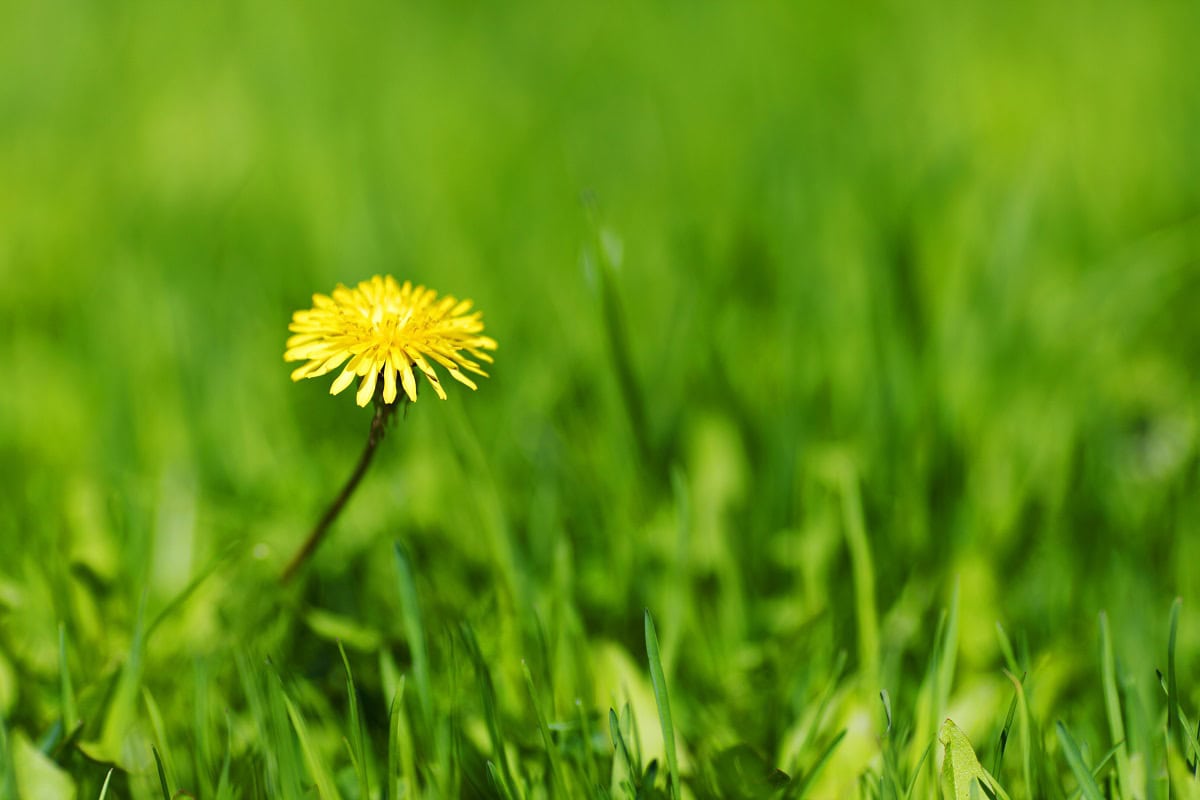
Azaleas
Azaleas, known for their association with femininity and elegance, are native to Korea and boast a variety of vibrant colors. These flowers typically represent the care for loved ones, as well as love and passion.
These flowers have a brief but fiery blooming period, contributing to their representation of temperance and the transience of life. They prefer not to be in overly wet soil, where their name, derived from Greek, meaning "dry," originates.
Colors and Meanings:
- Pink: Indicative of love and romance.
- White: Symbolizes purity and innocence.
- Red: Conveys passion and strong emotions.
- Yellow: Stands for friendship and happiness.
Each color of the azalea flower carries its own unique significance, adding depth to its overall symbolism.
The Korean azalea, or Rhododendron obtusum, is an evergreen shrub with small, oval-shaped leaves that burst into a range of colors from vibrant pink to deep red or purple. The azalea is a symbol of the country's beauty, reflecting Korea's cultural reverence for nature and symbolism.
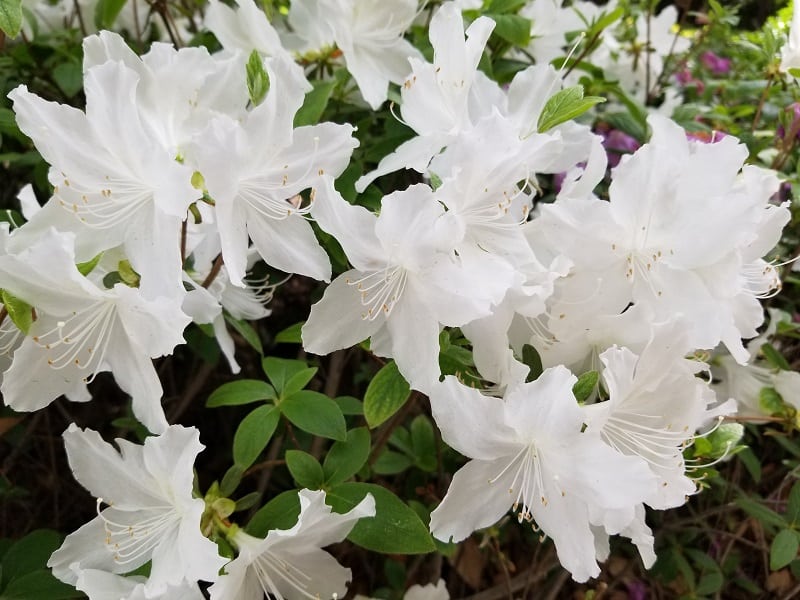
Lavender
Lavender is often associated with tranquility and peace. It represents a sense of calm and relaxation, which is why it is frequently used in products that promote a peaceful atmosphere, such as essential oils and sachets.
The scent of lavender has a longstanding history of being cherished for its ability to create a serene environment. The plant's soft purple hues contribute to its symbolic meaning, as purple is a color that has historically been linked to royalty and elegance.
While not native to Korea, lavender's universal appeal and symbolism of peace and tranquility have made it a beloved plant in various cultures, including Korea, even celebrated in the Hani Lavender Festival every summer.
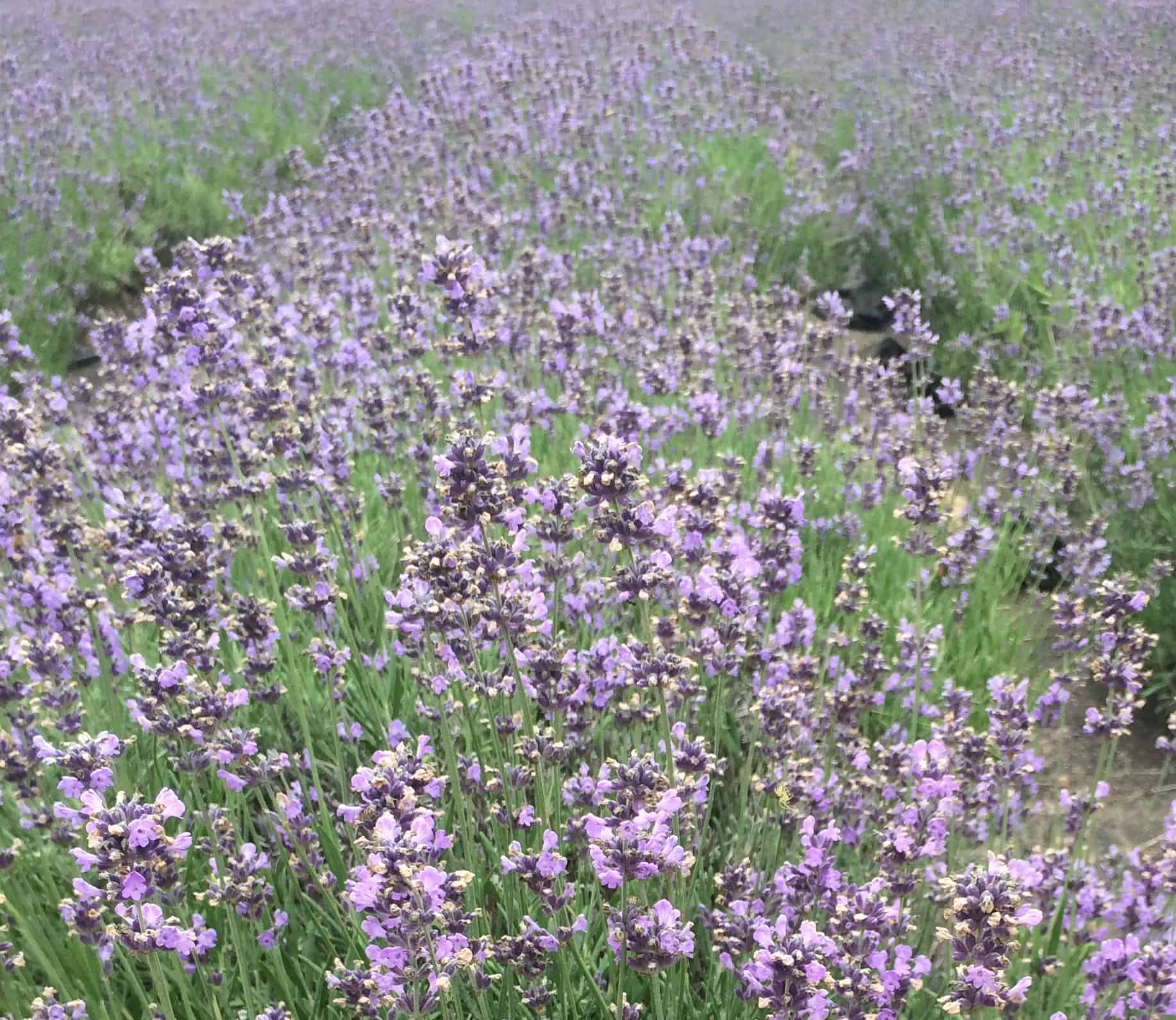
Buckwheat Flowers
Buckwheat flowers, known to bloom into delicate white clusters, hold a special place in Korean culture.
Buckwheat, predominantly recognized for its edible seeds, offers more than just nutritional value. The flowers themselves carry deep symbolic meanings. They are often associated with the idea of a lover, as portrayed in popular Korean dramas, symbolizing love and devotion.
These bell-shaped blooms vary in color, commonly found in shades of pink, pale yellow, creamy white, and light yellow. Buckwheat flowers' understated elegance and gentle sway in the breeze give them a tender aesthetic appeal.
Their relatively short blooming period contributes to their representation of transience and the precious nature of love. Culturally, their presence is felt most ardently during the Bongpyeong Buckwheat Flower Festival.
Here, the rolling hills draped in a carpet of these blossoms create a mesmerizing sight celebrated with joy and excitement. The festival honors not only the beauty of the buckwheat flower but also its symbolic message of love's endurance amidst the fleeting moments of life.
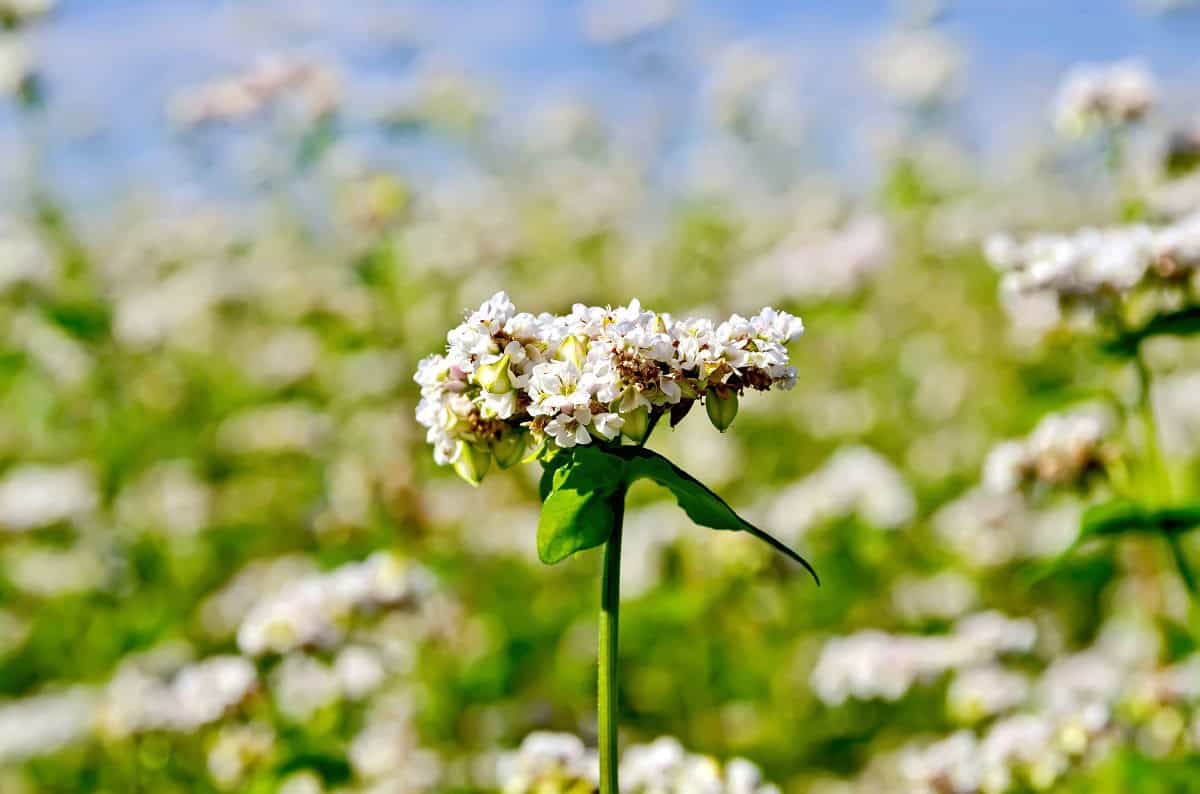
Orchids
In Korean culture, orchids represent a variety of positive attributes. They carry connotations of refinement, elegance, and beauty. As symbols, orchids often convey deep affection and are frequently exchanged as gifts to express admiration and love.
Their delicate appearance belies their strength and longevity, making orchids a beloved plant in horticultural circles. The intricate patterns and vibrant colors of orchids' blooms are a testament to their enduring allure.
These flowers also hold a special place in matrimonial celebrations. Orchids are symbolic of fertility and are commonly used in wedding arrangements. In this context, they not only add aesthetic appeal but also bring symbolic blessings for the couple's future.
Their significance in spirituality should not be overlooked. Orchids are associated with spiritual growth and the pursuit of perfection. With their strikingly beautiful and exotic presence, orchids continue to be a compelling symbol within Korean floral tradition.

Forsythia
Forsythia, with their vivid yellow blossoms, are often the first to announce the onset of spring. These early bloomers herald the season, bringing sentiments of anticipation and the awakening of nature.
Their golden hues signify warmth and wisdom. In Korean culture, they're viewed as messengers of good news, symbolizing new beginnings and hope.
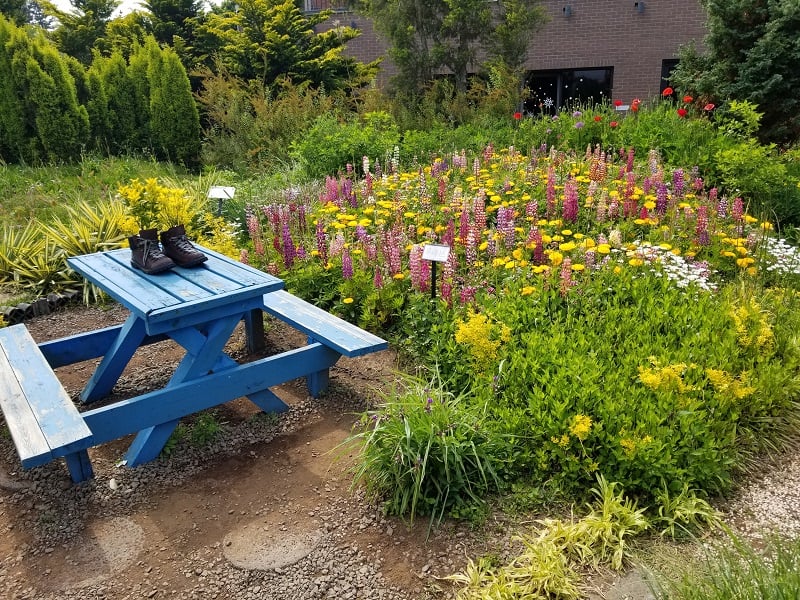
🙋 Frequently Asked Questions
The Hibiscus syriacus, known locally as Mugunghwa, represents eternal life and resilience, while beotkkot, or cherry blossoms, symbolize purity and renewal, heralding the spring season.
Flowers hold a special place in Korean culture, featuring prominently in festivals, weddings, and other celebrations. The Rose, a universal emblem of love, is used to convey deep affection and admiration across Korea, while during the Lunar New Year, Jindallae (Azaleas) are admired for their vibrant colors.
In Korea, irises are given on birthdays for their association with good news and compliments towards one's wisdom and respect. Also carnations, with their variety of colors, convey different messages: red for love, pink for gratitude, and white for purity and luck.
The Mugunghwa, or Hibiscus syriacus, holds deep significance in Korea. NAtionally it's regarded as the embodiment of the nation's enduring spirit, as the flower's ability to survive and thrive resonates with the historical resilience of the Korean people. It appears in various cultural artifacts and events, symbolizing hope and unity.

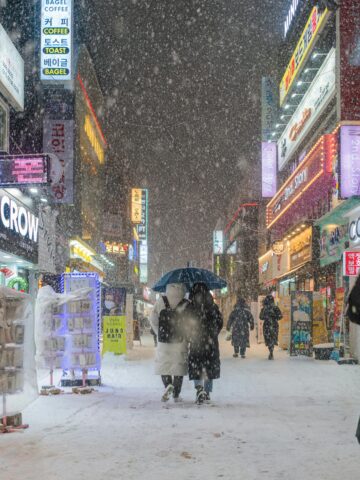



Comments
No Comments